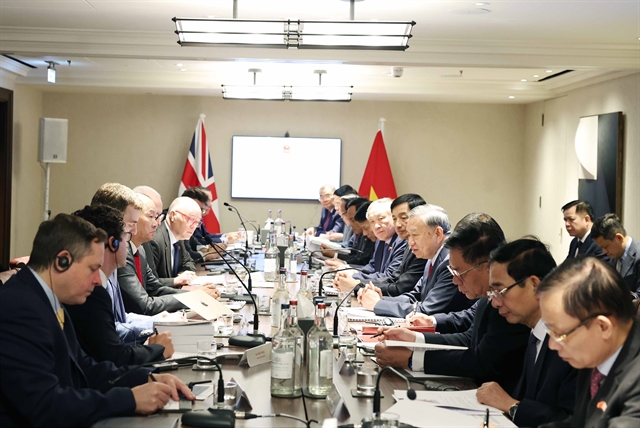

5G is already here in Vietnam: local network operators have already completed trials and are preparing for roll-out by next year. This is in line with the government’s goal to make the country one of the first in ASEAN— and the world — to adopt the technology
5G is already here in Vietnam: local network operators have already completed trials and are preparing for roll-out by next year. This is in line with the government’s goal to make the country one of the first in ASEAN - and the world - to adopt the technology.
In preparation for 5G commercialisation, the focus now is on ensuring the right infrastructure will be in place. In other 5G pioneer markets such as the United States and Japan, this has meant creating an ecosystem that can support and leverage on all possible sources of the new spectrum in the sub-6 GHz range and millimetre wave or mmWave frequencies, which are expected to be the cornerstones of what will make 5G better than previous generations of cellular technology.
mmWave as an essential 5G component
mmWave is one of the three groups of spectrum bands which will be utilised to deliver 5G. Referring to high frequency bands (24 GHz to 40 GHz), mmWave is meant to complement sub-6 MHz (“sub-6”) frequencies including mid bands (1 GHz to 6 GHz) and low bands (less than 1 GHz) in delivering the complete 5G experience.
Each spectrum band plays a role in addressing user needs. Low-bands provide only incrementally better speeds than 4G though it offers widespread coverage; mid-bands give a good mixture of reach and capacity benefits. mmWave trumps both, however, in terms of speed and latency.
In a recent test conducted earlier this year, Qualcomm was part of the collaboration which was able to achieve a record-breaking 4.3Gbps downlink speeds on 5G mmWave[1]. Speedtest data from Ookla, the global leader in internet testing and analysis, also showed that mmWave 5G devices powered by Snapdragon Modem-RF Systems deliver lightning-fast speeds that are 4x faster than 5G speeds in mid-band spectrum.[2]

|
“5G implementation needs to make use of both sub-6 and mmWave frequencies,” said Thieu Phuong Nam, Qualcomm country manager for Vietnam, Laos, and Cambodia. “We will need mmWave because it is what makes 5G a true game-changer, unlocking truly new applications for both businesses and end-users.”
While the demand for internet data has risen over the years, the COVID-19 pandemic has put further pressure on current networks. Over the course of the recent government-prescribed social distancing initiative, the Department of Telecommunications recorded a 40% increase in data usage.[3] Given this, mmWave can be a key source of spectrum that will help address spikes in traffic while ensuring network stability.
In several 5G service launches around the world, Qualcomm has enabled many network providers to make use of both mmWave and sub-6 GHz spectrum through its third-generation 5G Modem-RF System. Enabling mmWave-sub6 aggregation, this solution helps lift 5G performance and increase mmWave coverage by using all high and mid/low bands simultaneously.
mmWave adoption benefits multiple industries
Given its advantages, mmWave is poised to deliver many benefits across the mobile network value chain. For network operators, mmWave will enable them to provide new and enhanced mobile experiences to their subscribers. These include fiber-like data speeds, low latency for real-time interactivity, massive capacity for unlimited data plan, and lower cost per bit.
Qualcomm innovations which can help carriers do this include the Qualcomm® QTM527 mmWave antenna module, the world’s first fully integrated extended-range mmWave solution for 5G fixed wireless access (FWA) which allows mobile operators to offer fixed internet broadband services to homes and businesses using their 5G network infrastructure. More than 30 original equipment manufacturers (OEMs) globally are already working on FWA solutions using Qualcomm technologies to empower telco companies to provide a cost-effective alternative to cable, DSL and fiber.
“By adopting mmWave, telecom operators can enhance current services or even introduce new ones,” said Mr. Thieu. “End users can play rich media and entertainment, such as photorealistic and high-quality videos via extended reality (XR); gamers can play multiplayer games virtually lag-free; and event attendees don’t have to worry about competing for coverage which can ruin a livestream or delay a social media post.”
Mr. Thieu, however, emphasises that mmWave, much like 5G in general, goes beyond the mobile industry. The advantages offered by mmWave is set to power innovations in various business sectors. In Vietnam, one potential industry that may benefit the most is manufacturing.
While contributing 16.48% of the country’s GDP in 2019, most of Vietnam’s manufacturing centres on low-value manufacturing.[4] mmWave potentially presents one opportunity for the country to shift into higher value-added production by enabling smart factories. By using automation and robotics, artificial intelligence, augmented reality for troubleshooting, and the Internet of Things (IoT), Vietnam can transform its factories to efficiently produce higher-value products such as cars, consumer electronics, and their related parts.
Creating a 5G mmWave ecosystem in Vietnam
Apart from transforming industries, the adoption of mmWave is also aligned with the Vietnamese government’s digitalisation plans and its objective of making full use of opportunities brought about by Industry 4.0, as summed up in Resolution No. 52-NQ/TW dated 27 September 2019.
In its National Strategy for the Fourth Industrial Revolution, the government outlined specific socio-economic targets through 2030, including the digital economy accounting for 30% of GDP, completing the formulation of an e-government; and forming smart urban chains in key economic regions. According to Mr Thieu, 5G will be the underlying technology that will help power Vietnam to reach these objectives.
However, ensuring Vietnam’s 5G ecosystem can leverage on mmWave rests on both public and private stakeholders.
The national government plays a large part by ensuring that sufficient spectrum is made available and that regulations are favourable to the adoption of both sub-6 and mmWave frequencies.

|
In December 2019, Minister of Information and Communications Nguyen Manh Hung met with Alex Rogers, Vice President of Qualcomm Technologies and President of Qualcomm Technology Licensing to discuss the development of 5G[5]
From the private sector, on the other hand, network operators need to ensure that the 5G infrastructure they will deploy include those for mmWave. Vietnamese original equipment manufacturers (OEMs), meanwhile, will need to design and produce smartphones and devices that are mmWave-compatible for end-users to access its benefits. Moreover, other sectors will also need to prioritise digitalisation as part of its long-term business strategy, including upskilling their employees.
For its part, Qualcomm is committed to help make mmWave part of Vietnam’s 5G deployment. From working with the Vietnamese Government as a 5G expert resource for policymakers to making its technologies available to Vietnamese companies, to working with local OEMs such as VinSmart and Bkav to develop “Make in Vietnam” devices, Qualcomm is ready to work with local stakeholders to create a local 5G network that is truly comparable to those of other 5G pioneer countries.
“Qualcomm is committed to the growth of the wireless industry in Vietnam, and has invested significantly in supporting ecosystem partners and foster innovation through our Qualcomm Vietnam Innovation Challenge," added Mr Thieu. “We at Qualcomm believe that for Vietnam to be able to fully take advantage of 5G, it needs to incorporate mmWave technology as part of its preparations right from the start. Qualcomm is open and ready to work with Vietnam and relevant stakeholders to make this a reality.”


.jpg)

